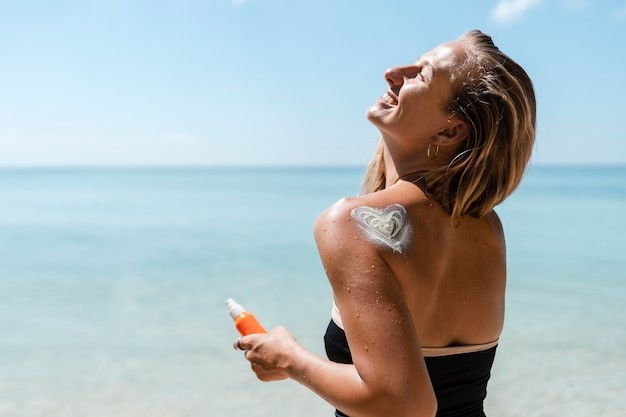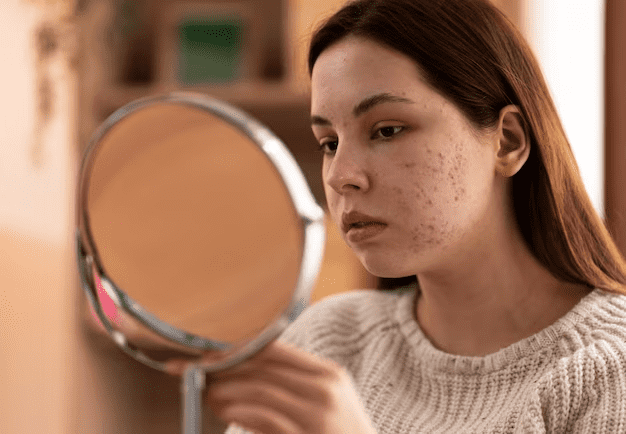Sun Safety: 5 Tips for Protecting Your Skin During Summer Outdoor Activities

The sun might be the center of our solar system, but during the summer, it can feel like the center of all things sweaty and sunburn-y. While soaking up some rays can be enjoyable, it’s crucial to remember sun safety, especially during peak sun hours, typically between 10 am and 4 pm. This is when the sun’s ultraviolet (UV) rays are strongest and pose the greatest risk of sunburn and premature skin aging (1).
5 Tips for Protecting Your Skin During Summer
1. Use Shade
But here’s the good news
seeking shade is a fantastic first line of defense in your natural summer skin protection strategy. Here are some ways to embrace the shade and keep your skin happy:
Embrace the Umbrella
Don’t underestimate the power of a good umbrella! Pack a portable umbrella for outdoor adventures, picnics, or even relaxing at the beach. It provides a cool, shaded haven wherever you go.
Tree Time
Parks and nature trails offer a natural solution – the shade of trees! Plan your outings around times when you can take advantage of shady areas under trees. Remember, the position of the sun changes throughout the day, so the shade location might shift as well.
Schedule Sun Savvy
Whenever possible, plan outdoor activities for earlier mornings or later evenings when the sun’s intensity is lower. This allows you to enjoy the outdoors while minimizing sun exposure during peak hours.
By incorporating these shade-seeking strategies into your summer routine, you can significantly reduce your sun exposure and protect your skin naturally.
2. Sunscreen: Protect Skin from sun
Even with shade-seeking strategies, some sun exposure is inevitable during summer adventures. That’s where sunscreen becomes your essential ally in protecting your skin. Here’s why sunscreen is so important:
Broad-Spectrum is Key
Look for a broad-spectrum sunscreen that shields your skin from both UVA and UVB rays. UVA rays penetrate deep into the skin, contributing to wrinkles and premature aging, while UVB rays cause sunburn.
SPF 30 (or Higher) is Your Minimum
The Sun Protection Factor (SPF) indicates a sunscreen’s ability to block UVB rays. Choose a sunscreen with SPF 30 or higher for effective sun protection. Higher SPF values offer greater protection, but remember, no sunscreen blocks 100% of UV rays (2).
Application is Key
Generous and even application is crucial for optimal protection. Apply sunscreen to all exposed skin, including your face, neck, ears, lips (opt for lip balm with SPF), tops of your feet, and even the backs of your hands. Don’t forget areas like your shoulders and the tops of your ears, which are often missed.
Be Proactive, Not Reactive
Apply sunscreen liberally for at least 15 minutes before heading outdoors. This allows the sunscreen to absorb into your skin and form a protective barrier (3).
Reapplication is Essential
Sunscreen’s effectiveness diminishes over time, especially with sweating or swimming. Reapply sunscreen every two hours, or more often if you’re sweating or swimming.
Remember, sunscreen is an essential tool in your skincare routine for summer, but it’s not an excuse to bake in the sun for hours. Combine sunscreen with shade-seeking and sun-protective clothing for a layered approach to sun safety.
3. Dress for Sun Protection
Sun-protective clothing isn’t just about fashion – it’s a fantastic way to shield your skin from the sun’s harmful rays naturally. Here’s why incorporating sun-protective clothing into your skincare routine in summer is a wise move:
Cover Up for Confidence
Long-sleeved shirts, pants, and wide-brimmed hats provide a physical barrier against UV rays. This not only protects your skin but also keeps you feeling cooler and more comfortable on hot summer days.
Fabric Matters
Opt for tightly woven fabrics like cotton, linen, or denim for better sun protection. These fabrics offer a denser barrier against UV rays compared to loose-knit or sheer materials.
By making sun-protective clothing a part of your summer wardrobe, you can significantly reduce your sun exposure and minimize the need for frequent sunscreen reapplication. Look for clothing with a UPF (Ultraviolet Protection Factor) rating, which indicates the level of UV protection the fabric provides.
4. Sunglasses: Protecting Your Eyes
Sun protection isn’t just about safeguarding your skin – your eyes need some love too! Sunglasses are an essential element of your summer season skin care tips, playing a crucial role in protecting your eyes from sun damage. Here’s why:
UV Rays and Your Eyes
Just like your skin, your eyes are susceptible to UV ray damage. Excessive sun exposure can increase the risk of cataracts, macular degeneration, and other eye problems.
Look for UVA/UVB Blocking Power
Choose sunglasses that block both UVA and UVB rays. Look for a label that specifies “UV protection” or “blocks 99% of UVA/UVB rays.”
Investing in a good pair of sunglasses with UV protection is a smart move for safeguarding your eye health throughout the summer and beyond.
5. Keep Yourself Hydrated
Sun exposure can take a toll on your skin’s hydration levels. Dehydration not only makes your skin feel dry and uncomfortable, but it can also affect its overall health and appearance. Here’s how staying hydrated benefits your skin during the summer:
Hydration for a Healthy Glow
Drinking plenty of water helps your skin maintain its plumpness and elasticity, giving you that coveted summer glow. It also flushes out toxins and keeps your skin looking healthy and radiant.
Moisture Barrier Boost
Hydration strengthens your skin’s natural moisture barrier, which helps it protect itself from environmental aggressors, including the sun’s UV rays.
Conclusion
Sun Damage Doesn’t Discriminate
Everyone’s skin is susceptible to sun damage, even those with darker complexions. While sunburn might be less visible on darker skin tones, UV rays can still cause premature aging, wrinkles, and increase the risk of skin cancer.
Long-Term Effects
The damaging effects of sun exposure accumulate over time. Sunburns and excessive sun exposure in your youth can increase your risk of developing skin cancer later in life.
By incorporating the sun safety tips outlined in this blog – seeking shade, using sunscreen, wearing protective clothing, and staying hydrated – you can enjoy the summer sun safely and responsibly. Remember, a healthy dose of sunshine can be beneficial, but moderation and protection are key. So, embrace the summer, but do it with sun smarts!
FAQs
1. How do you protect your skin in the summer?
Wear sunscreen with SPF, stay hydrated, and seek shade during peak hours to protect your skin in the summer.
2. How do you protect your skin working outside?
When working outside, wear protective clothing, hats, and sunglasses, and apply sunscreen regularly to shield your skin.
3. How can I protect my skin from heat?
To shield your skin from heat, use sunscreen, wear light, breathable clothing, and stay hydrated to prevent dehydration and sunburn.
4. What are 5 ways to protect yourself from the sun?
Protect yourself from the sun by wearing sunscreen, seeking shade, wearing protective clothing, using sunglasses, and avoiding peak sun hours.
5. What should be a skin care routine in summer?
A summer skincare routine should include cleansing, sunscreen application, moisturizing, staying hydrated, and using products with antioxidants to combat sun damage.






You could definitely see your expertise within the article you write.
The world hopes for more passionate writers like you who are not afraid to say how they believe.
All the time follow your heart.